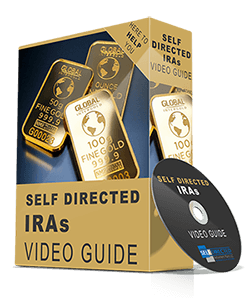A Roth IRA is an excellent tool to put away money for your retirement. However, like all other tax-advantaged retirement plans, there are some rules regarding the taxation of contributions and withdrawals. There are income limits for participating in these plans and also limits on how much you can contribute in a given year. It’s important that you understand the impact these rules can have on your retirement savings. Read on to know more.
A Roth IRA is similar to a traditional IRA; the difference is, however, in their tax treatments. Traditional IRAs are tax-deferred, while Roth IRAs are funded with after-tax dollars. As a result, Roth IRA contributions aren’t deducted from your taxable income. However, the biggest benefit is that you can make tax-free withdrawals in your retirement.
Key Takeaways
Roth IRA Eligibility Rules
| Roth IRA Eligibility Rules for 2022 | Roth IRA Eligibility Rules for 2023 |
|---|---|
| You (and/or your spouse) have earned income of at least the amount of total contributions. | You (and/or your spouse) have earned income of at least the amount of total contributions. |
| No age limit | No age limit |
|
Your tax filing status and modified adjusted gross income (MAGI) decide whether or not you can make a full contribution to your IRA:
Full contribution:
Partial contribution:
No contribution:
Married but filing separately (living with your spouse anytime during the tax year):
Married but filing separately (didn’t live with your spouse during the tax year):
|
Your tax filing status and modified adjusted gross income (MAGI) decide whether or not you can make a full contribution to your IRA:
Full contribution:
Partial contribution:
No contribution:
Married but filing separately (living with your spouse anytime during the tax year):
Married but filing separately (didn’t live with your spouse during the tax year):
|
Get Your ONE-on-ONE CONSULTATION
Roth IRA Income Limits
To make a Roth IRA contribution in 2023:
Required Minimum Distributions (RMDs)
Traditional IRAs need you to take required minimum distributions (RMDs) after you turn age 72. Even if you don’t need the money, you have to take it if you don’t want to pay taxes on it. With Roth IRAs, you are not required to take RMDs. This means if you don’t need the money, you can let it grow tax-free, allowing more flexibility into your long-term plans.
Roth IRA 5-Year Rule
In this section, we cover three Roth IRA 5-year rules:
Qualified Distributions
Qualified distributions from Roth IRA include distributions taken:
Non-Qualified Distributions
A non-qualified distribution from a Roth IRA include distributions taken:
Take control of your financial future now.
Roth IRA Withdrawal Rules by Age
| Under 59.5 | Over 59.5 | |
|---|---|---|
| If you meet the 5-year rule | Withdrawal of earnings is subject to taxes and penalties. You may be able to avoid these if you:
|
No taxes or penalties |
| If you don’t meet the 5-year rule: | Withdrawal of earnings attracts penalties and taxes. You can avoid these if you:
|
Earnings attract taxes but not penalties. |
Tax Breaks for Roth IRA Contributions

Contributions to Roth IRAs are made of after-tax money. That’s the reason why you don’t pay tax when you withdraw them. That said, you may also be eligible for a tax credit of 10% to 50% on the amount contributed to a Roth IRA. This tax break is called the Saver’s Credit. Taxpayers in the low- and moderate-income groups qualify for this tax break. The tax credit is up to $1,000 and depends on three things: adjusted gross income (AGI), your filing status, and Roth IRA contribution. However, there are some limits to qualify for this tax break for the tax year 2021:
First-Time Homebuyer Exception
If you want to buy, build or rebuild your first home, the IRS allows you to take up to $10,000 in tax- and penalty-free distribution from your Roth IRA even before you turn 59.5.
Higher Education Expenses
You can use your Roth IRA distribution to pay for higher education expenses without incurring the 10% early withdrawal penalty, even if you make the distribution before you reach age 59.5. However, the withdrawal amount is subject to income tax.
Special Changes in 2020
In 2020, CARES Act was introduced to provide relief to those affected by the coronavirus pandemic. The Act allowed a hardship distribution of up to $100,000 without a 10% early withdrawal penalty, which is normally charged if the distribution is taken before age 59.5.
However, the withdrawals are subject to tax. That said, the Act gives three years for the account holders to pay the tax owed on such withdrawals, which they are normally required to pay in the current year. They can also choose to repay the withdrawal amount and avoid paying the tax, even if the amount exceeds the annual contribution limit for that retirement plan.
By understanding the different Roth IRA rules, you’ll have a better understanding of how these rules affect your retirement savings and your future retirement goals. If you’re still confused, speaking to Rick might help. Contact him now!
Your Retirement, Your Way!
FAQs
Can you lose money in a Roth IRA?
Yes, you have the flexibility to invest your IRA funds in a range of options, but it’s essential to be aware that certain investments may experience a loss in value, particularly in the short term. It’s crucial to assess your risk tolerance and understand the level of risk you are comfortable with when selecting investments for your IRA
Should you contribute to a 401(k) or a Roth IRA?
Both a 401(k) and a Roth IRA are beneficial tools for saving for retirement, and the great news is that you don’t have to pick just one. If you meet the eligibility criteria for a Roth IRA, you have the option to contribute to it in addition to participating in an employer-sponsored retirement plan like a 401(k). However, it’s important to note that contributing to both requires having enough funds available, which may not always be feasible for everyone.

Rick Pendykoski is the owner of Self Directed Retirement Plans LLC, a retirement planning company based in Goodyear, AZ. He has over three decades of experience working with investments and retirement planning, and over the last ten years has turned his focus to self-directed ira accounts and alternative investments. If you need help and guidance with traditional or alternative investments, call him today (866) 639-0066.




